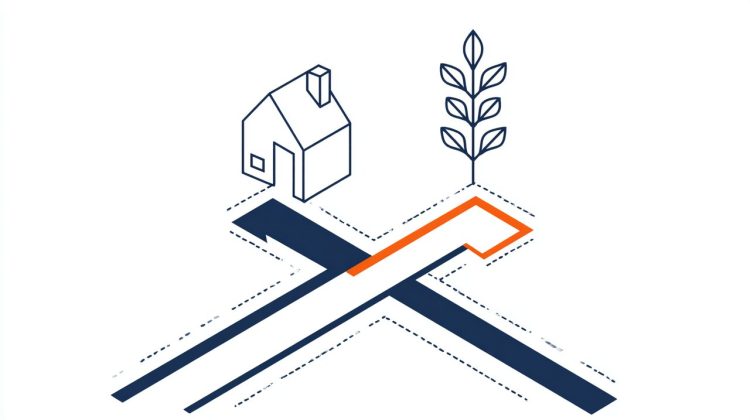For many of us, a mortgage isn’t just a loan; it’s often the single largest financial commitment we’ll ever make. It’s a journey that spans decades, accumulating a significant amount in interest over its lifetime. While the dream of paying it off early is common, the path to achieving this can often feel complicated or even a little daunting.
This is precisely where your mortgage calculator becomes an indispensable ally. Far from being just a basic number-crunching tool, it transforms into a powerful strategic sandbox. It’s where you can confidently plan your early repayment strategies and unlock substantial interest savings. This guide offers seven carefully crafted, actionable insights to help you master mortgage prepayment and make truly informed financial decisions.
1. The Mortgage Calculator: Your Strategic Financial Sandbox
Think of your mortgage calculator as much more than a simple arithmetic device. From an expert’s perspective, it’s a dynamic financial sandbox—a powerful platform where you can simulate various financial decisions and gain clear foresight into your future cash flow. It takes the abstract concepts of interest rates and loan terms and translates them into concrete figures: your monthly payments, the total interest you’ll pay, and the precise benefits of paying off your loan sooner, a capability you can explore firsthand with a powerful online mortgage calculator Mortgage Calculator.

In essence, it allows you to ‘rehearse’ your financial future. Its fundamental value lies in providing unparalleled decision transparency and foresight. By tweaking variables like adding extra principal payments, shortening your loan term, or even exploring new refinancing rates, you can instantly see how small adjustments can lead to thousands—or even tens of thousands—in interest savings and a significantly shorter repayment journey.
“True financial acumen isn’t just about how much wealth you accumulate, but how deeply you understand and master its underlying principles.”
Your mortgage calculator is an essential instrument for grasping these very principles.
2. Compounding Interest: Unpacking the Time Value of Debt
Compound interest is often called the eighth wonder of the world, but when it comes to debt, it’s a double-edged sword. For a mortgage, compounding means that interest continuously builds upon your principal over many years. Your mortgage calculator vividly illustrates the profound impact of this time value on the total interest you pay.

It shows you how every early principal repayment translates into magnified savings on future compound interest charges. The key insight here is the concept of ‘front-loaded interest.’ In the early years of your loan, a significant portion of your monthly payment goes straight to interest. The calculator allows you to simulate an early, extra principal payment, revealing its powerful effect on reducing decades of future interest accumulation. This exercise isn’t just about crunching numbers; it cultivates a deep understanding of the true cost of time.
3. Supplementary Principal Payments: Your Direct Path to Acceleration
One of the most straightforward and effective strategies for paying off your mortgage early is making additional principal payments, whether consistently or whenever you have extra funds. Each of these payments directly reduces the principal balance, which in turn means less interest accrues in the future, accelerating your journey to debt freedom.
Your mortgage calculator offers an intuitive way to visualize how even modest monthly additions can, over time, lead to remarkably substantial cumulative savings. For example, if your monthly mortgage payment is $2,000, and you add just an extra $100 to the principal each month, the calculator will show you a potential reduction of several years off your loan term and tens of thousands in total interest saved. The interest you avoid by that extra $100 in the early stages of the loan often far surpasses your initial expectations.
A crucial tip: always ensure your loan agreement allows penalty-free prepayments, and be sure to explicitly instruct your lender to apply any additional funds directly to the principal, not towards future payments.
4. Reducing Loan Duration: Balancing Time and Interest Savings
Opting for a shorter loan term—like converting a 30-year mortgage to a 15-year one—is another powerful early repayment strategy. This isn’t just a numerical choice; it represents a significant trade-off between financial flexibility and substantial interest savings. While your monthly payments will increase considerably, the total interest you pay will decrease dramatically, leading to quicker liberation from debt.

The mortgage calculator clearly contrasts the total interest and monthly payment differences across various terms. For instance, a $300,000 loan might show a total interest difference of hundreds of thousands of dollars between a 30-year and a 15-year term. However, this strategy demands robust cash flow to comfortably manage the elevated monthly payment burden. While pursuing interest savings is smart, it is absolutely imperative not to compromise the financial stability of your daily life.
5. Refinancing Strategies: A Smart Look at Rates and Costs
When market interest rates drop, refinancing can be a powerful financial tool. This allows you to replace your existing loan with a new one, typically to secure a lower interest rate, shorten your loan term, or convert an adjustable-rate mortgage to a more predictable fixed rate. This process requires careful financial analysis, especially when weighing the new loan’s transaction costs (like origination fees or appraisal fees) against your projected future interest savings.
By leveraging your mortgage calculator, you can input the rates, terms, and associated costs of both your current and prospective loans to accurately determine the refinancing break-even point. This means comparing the ‘cost of refinancing’ against your ‘monthly savings’ to figure out how long it will take to recoup your initial outlay and what your aggregate long-term savings will be. From an analytical perspective, refinancing isn’t always the best solution; its true value must always be established through a rigorous cost-benefit analysis tailored to your situation.
6. Bi-Weekly Payments and Incremental Contributions: Big Wisdom from Small Sums
Bi-weekly payments are an ingenious strategy that subtly leverages the effect of making an ‘extra’ monthly payment each year. There are 52 weeks in a year, so bi-weekly payments result in 26 half-month payments, which adds up to 13 full monthly payments annually, instead of the conventional 12. This ‘additional’ payment is directly applied to your principal, significantly accelerating your loan’s amortization.
Even if your lender doesn’t formally support bi-weekly payments, you can achieve a similar effect through incremental contributions. For example, you could simply set aside 1/12th of your monthly payment separately each month and then apply this accumulated sum as an additional principal payment at the end of the year. Your mortgage calculator clearly demonstrates how this seemingly minor behavioral adjustment can, over decades, lead to substantial interest savings and a significantly reduced loan term.
7. Opportunity Cost: Prepayment vs. Investment – A Philosophical Choice
When you’re thinking about paying off your mortgage early, a fundamental question often arises: should you put extra capital towards accelerated debt reduction or towards investments? This isn’t a simple either/or choice; it’s a profound comparison rooted in the concept of opportunity cost.

From an analytical perspective, this decision really hinges on a few factors: your personal risk tolerance, your current mortgage interest rate, and your anticipated investment return rate. For instance, if your mortgage interest rate is relatively high, and your projected investment returns are lower than this rate, then early repayment can be seen as a ‘risk-free investment.’ It effectively yields a guaranteed return equivalent to your mortgage interest rate.
Conversely, if your mortgage interest rate is low, and you have the capacity to secure higher, stable investment returns, then deploying that capital into investments may prove more judicious. Your mortgage calculator can help here by simulating the ‘return rate’ of early repayment, allowing for a direct comparison with your investment expectations.
“Smart financial decision-making isn’t just about maximizing one benefit; it’s about finding the optimal balance between risk and return that aligns perfectly with your unique circumstances.”
Your mortgage journey is both a significant financial challenge and a remarkable opportunity for personal financial growth. Through this deep dive into advanced strategies for mastering mortgage prepayment and achieving substantial interest savings through calculator utilization, we’ve moved beyond mere numbers to explore the core principles, trade-offs, and even the philosophical underpinnings of these strategies.
From seeing your calculator as a strategic sandbox to precisely evaluating the benefits of additional payments, shorter terms, and refinancing, and finally to comparing the opportunity cost of prepayment versus investment—each method is a deliberate step towards greater financial autonomy. Now, the crucial next step is to engage with your mortgage calculator. Start simulating various scenarios to map out the prepayment pathway that best aligns with your financial objectives. Ultimately, your financial future is shaped by the informed choices you make today.
💡 Frequently Asked Questions
A mortgage calculator acts as a strategic financial sandbox, allowing you to simulate various financial decisions and gain foresight into your future cash flow. It helps plan early repayment strategies, unlock substantial interest savings, and translates abstract concepts like interest rates into concrete figures, providing unparalleled decision transparency.
Making additional principal payments directly reduces your principal balance, which in turn means less interest accrues in the future. This accelerates your journey to debt freedom, with even modest monthly additions potentially leading to several years off your loan term and tens of thousands in total interest saved. Remember to instruct your lender to apply these funds directly to the principal.
For a mortgage, compounding interest means that interest continuously builds upon your principal over many years. Early principal repayments are crucial because they translate into magnified savings on future compound interest charges, especially by reducing the 'front-loaded interest' that makes up a significant portion of early monthly payments.
This decision involves comparing the opportunity cost, which hinges on your personal risk tolerance, current mortgage interest rate, and anticipated investment return rate. If your mortgage interest rate is higher than your projected investment returns, early repayment can be considered a 'risk-free investment' with a guaranteed return. Conversely, if you expect higher, stable investment returns, investing that capital might be more judicious.








